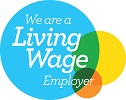
It’s the office, but not as we know it
It is easier to close an office than to reopen one. This is a statement that resonates at the moment. The world of work has moved forward at a speed that none of us could have possibly imagined as we welcomed 2020. Working en masse at home, and not only doing our “day” jobs, but in many cases juggling home-schooling, caring for vulnerable family members or coping with isolation.
As people, we are guided by our individual risk appetites as to how we feel about stepping back into society whether that is in relation to meeting friends face-to-face, dining out or using public transport. Firms too are assessing their appetite to the complex task of the return to the office.
Unsurprisingly, employees including senior staff have very mixed views ranging from those who are keen to regain the sense of normality working alongside their colleagues brings, to genuine concern that a return may put not only themselves but also their loved ones at risk. Firms are undertaking regular consultations with staff via pulse surveys to understand these individuals’ preferences. And fundamental, longer-term questions are also being asked. Do employees (or so many of them) need to be office-based at all? Do we really need all this floor space?
For those that want to and are able to return to the office, they will be met with a very different one from the one they left in mid-March. Social distancing is likely to continue for some time which will bring an alien environment of one-way systems, traffic lights and daily deep-cleans. Simple new practical considerations such as the wearing of face masks all day through back-to-back meetings will also surface. All of which begs the question of what collaborative working really look like when only a fifth of staff are on site.
Recently we published a guide capturing members’ current thinking on how to phase a return. It is clear that firms are taking a cautious approach: the safety and well-being of their employees is paramount. They will be informed by government guidelines and the lessons learnt from overseas. Interestingly, we are seeing quite different attitudes in different jurisdictions and it’s not just those on the other side of the world. Enthusiasm to return to the office for some of our European colleagues is considerably higher than say the UK. However, much of that may be due to population size and the ability to get to the office without using public transport.
There are some positive messages we can take from this crisis. I flagged earlier this month that firms are looking to seize the digital agenda. We have also clearly demonstrated that agile working works for our industry. We can deliver for our clients in a flexible way whilst also having other caring responsibilities. So we are an industry that can provide work-life balance (a phrase which now has a much wider meaning) and appeal to a wider and more diverse pool of talent.
It is clear the end of the ‘new normal’ is very much further away than initially anticipated, and there is much for firms to consider as they plan for the future. We would love to hear your thoughts on our guides which reflect real time insights from members and will be updated regularly. Please email me ([email protected]) and get in touch.






